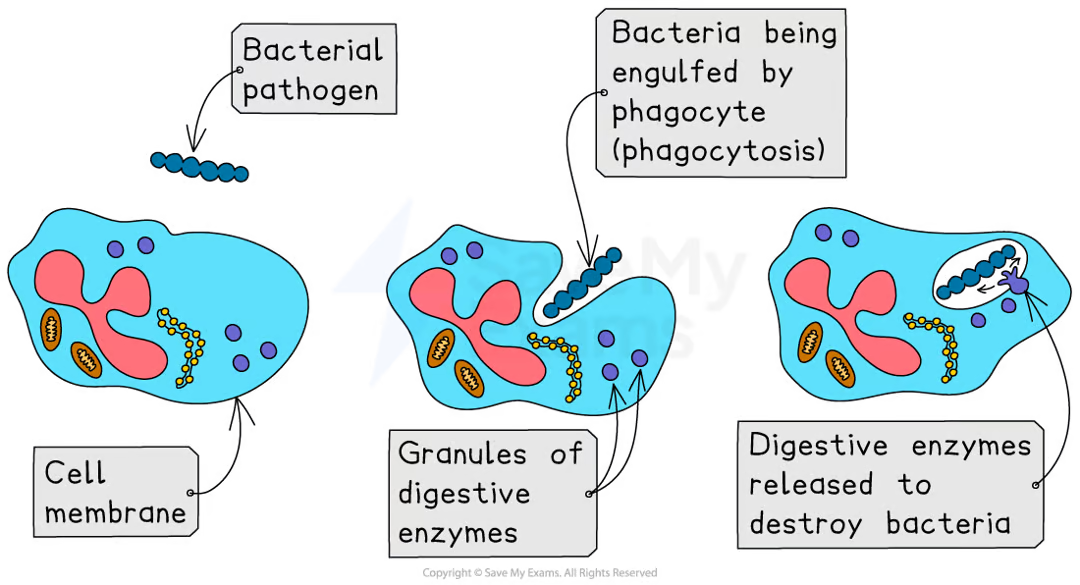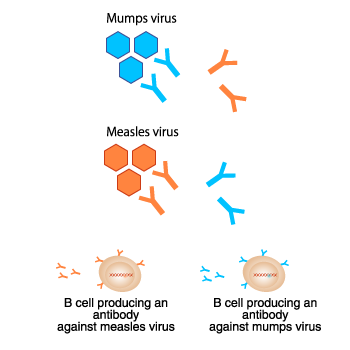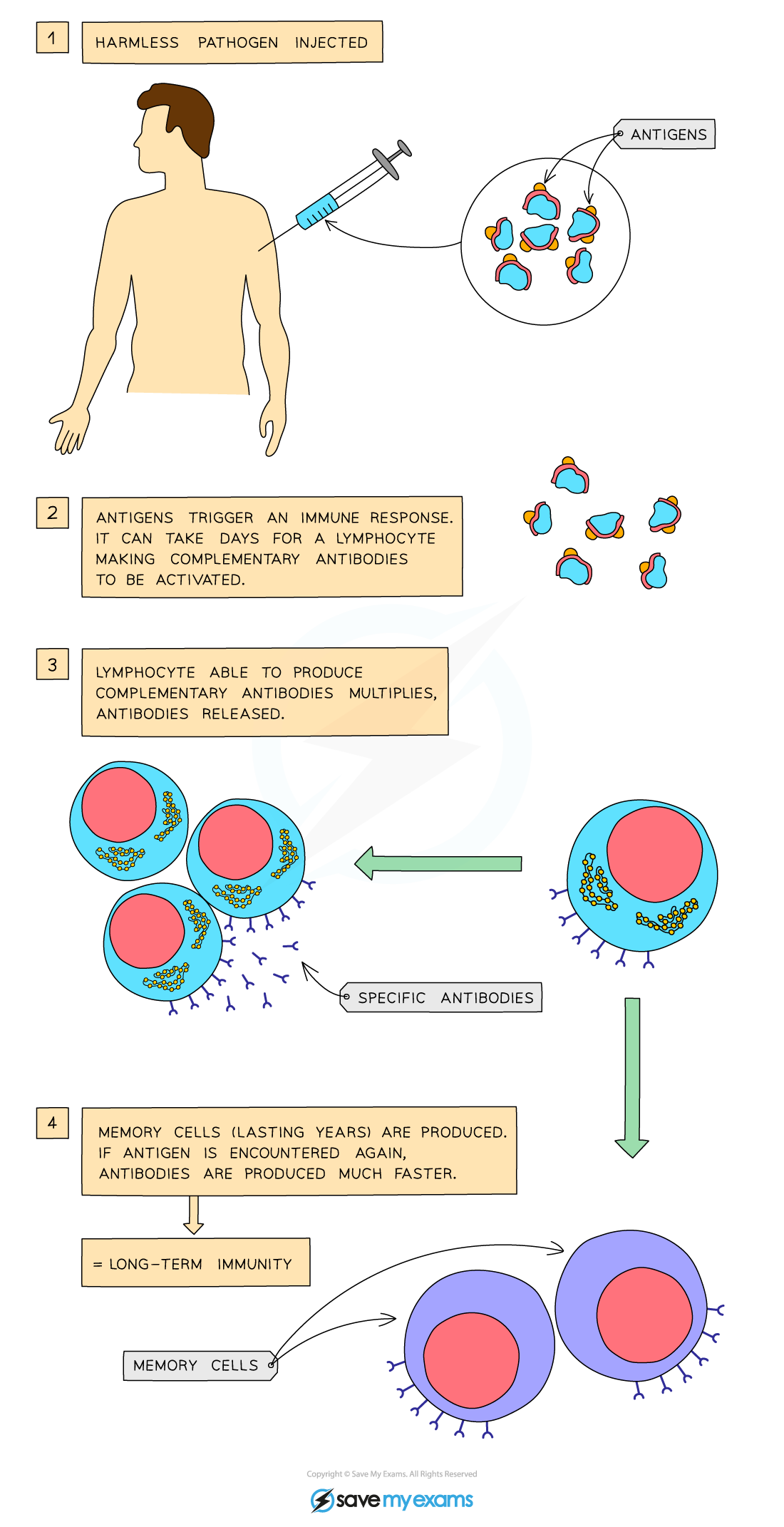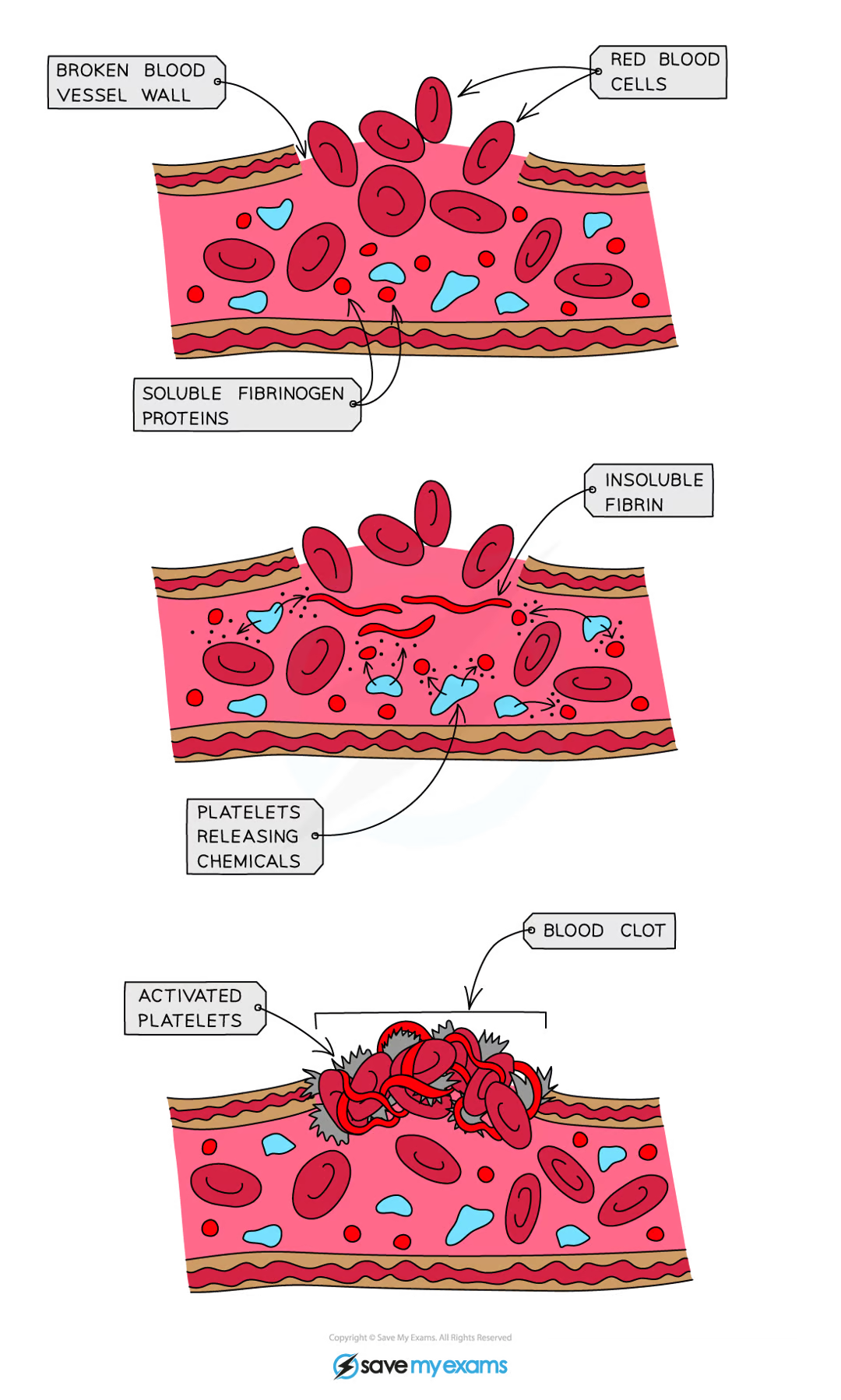Biology - Transport System Edexcel IGCSE
1/52
Earn XP
Description and Tags
All subtopics - Unicellular and Multicellular Organisms, Circulatory System, Role of the Xylem and Phloem, Root Hair Cells, Practical: Factors Affecting the ROT, Blood, Vaccinations, Platelets and Blood Clotting, Structure and Function of the Heart, Heart Rate and Exercise, Risk Factors for CHD, Blood Vessels
Name | Mastery | Learn | Test | Matching | Spaced |
|---|
No study sessions yet.
53 Terms
unicellular organisms
made of one cell, no need for transport systems because they can obtain the oxygen they need by diffusion through their cell membrane
properties of unicellular organisms
large surface areas relative to their volume → short diffusion distance from the centre to the surface
diffusion, osmosis, and active transport through cell membrane is sufficient for their needs
no need for specialised exchange structures or transport systems
properties of multicellular organisms
requires transport systems to supply all their cells with what they need fast enough
consists of many cells arranged in multiple layers → increases distance between the external environment and internal cells
requires specialised transport systems
circulatory system - animals
carries essential substances in the blood all around the body, such as:
oxygen
glucose
carbon dioxide
water
waste
vascular system - plants
transports - through xylem and phloem:
water
nutrients
sugars
amino acids
xylem
moves water and minerals from roots to shoots
formed from a hollow tube of dead cells, reinforced by lignin → provides a route for the column of water to move through the plant by transpiration
phloem
distributes sugars (sucrose) and amino acids from where they are produces / stored
sucrose and amino acids are produced in the leaves while plants photosynthesise → transported to other parts of the plant
formed from living cells forming a tube with holes through which substances can move
how is water important to plants?
needed for photosynthesis
maintain the turgor pressure in cells and keep their structure
transport of water into root hair cells - IMPORTANT
water is absorbed into the roots by osmosis (M1)
→ this is because there are high concentration of minerals in the root cells, therefore water is drawn into the cells from a high water potential in the soil to low water potential in the cells (M2)
The cells on the outer layer of the roots are specialised cells called root hair cells
root hair cell properties
adapted for the efficient uptake of water (by osmosis) and mineral ions (by active transport)
contains mitochondria which release energy for active transport
increases the surface area of plant roots → increases the rate at which water and minerals can be taken up (transpiration)
transpiration stream - order
once inside the root cells (M1), water can pass into the xylem vessels to be taken up to the stem (M2) into the leaves
however, if the leave is photosynthesising, then water is lost through the stomata (M3)
transpiration - definition
the loss of water vapour from the parts of the plant that are above the ground (leaves, stem, flowers)
transpiration - function in plants
transporting mineral ions
providing water to keep cells turgid in order to support the structure of the plant
providing water to leaf cells for photosynthesis
keeping the leaves cool as heat energy is removed from the leaves when water evaporates
factors that affect transpiration
light intensity
temperature
wind speed
humidity
light intensity - effect on ROT
↑ light intensity = more stomata open = ↑ transpiration
eventually, all the stomata will be open and any further increase in light intensity will not effect the ROT
temperature - effect on ROT
↑ temperature = more air particles move faster (↑ kinetic energy) = more water particles will evaporate = ↑ transpiration
wind speed - effect on ROT
↑ wind speed = moves away water surrounding the leaf = ↑ diffusion gradient = ↑ ROT
humidity - effect on ROT
↑ humidity in air = ↑ water in air = ↓ concentration gradient between inside and outside of leaf
this overall decreases the transpiration gradient (slows down)
bubble potometer - what is it used for?
used to estimate the rate of transpiration
how to measure ROT? (factors that effect the ROT)
light intensity = move the lamp closer / further away
wind speed = using a fan
temperature = changing the room temp.
humidity = spraying different volumes of water in a bag and placing it over the shoot
process of using the bubble potometer
as transpiration occurs, the xylem sucks up more water
therefore, the bubble will move along the capillary tube → measure the distance the bubble moves
if you measure the distance and time, you can then calculate the ROT
method of setting up the bubble potometer
cut the shoot underwater at an angle to prevent air getting in the xylem
assemble underwater so no air can get in
check it is water and air tight
dry the leaves and leave time for them to acclimatise
remove from the beaker of water to introduce bubble and then place it back
calculate ROT using bubble potometer (formula)
ROT = distance moved by air bubble (m) / time (min)
corms evaluation - bubble potometer
change: change intensity of the light
organisms: the plant used in each repeat is the same species, size, age, number of leaves
repeat: repeat it several times to ensure the results are reliable
measurement 1: measure the distance travelled by the bubble
measurement 2: …in 30 mins (calculate the ROT)
same: control the temp., wind speed and humidity of the environment
components of blood
red blood cells, white blood cells, platelets and plasma
red blood cells (erythrocytes) - structure and their functions
biconcave discs → gives them a large surface area to volume ratio to maximise diffusion of oxygen in and out
no nucleus to maximise the available capacity to carry the protein haemoglobin
produced in some bones, mainly ribs, vertebrae, and femur
contain the red pigment haemoglobin which can reversibly bind with oxygen
what does oxygen and haemoglobin produce? (reaction)
oxygen + haemoglobin → (reversible reaction) oxyhemoglobin
white blood cells - structure an their functions
larger than red blood cells and have a nucleus
→ different types have slightly different structures and functions
when you are ill, white blood cells are produced to protect the body from infections and bacteria
can repair tissue after an injury
types of white blood cells
Phagocytes
Lymphocytes
(both have different jobs)
what is a phagocyte’s job and how do they carry it out?
job:
carry out phagocytosis by ingesting pathogens
process: non-specific immune response
phagocytes have a sensitive cell surface membrane that can detect chemicals produced by pathogenic cells
once they encounter the pathogenic cell, they will engulf it and release digestive enzymes to digest it

what is a lymphocyte’s job and how do they carry it out?
job:
produces antibodies - antibody production
→ antibodies: proteins in a shape that is specific (complementary) to the antigens on the surface of the pathogen, they protect you when an unwanted substance enters your body
they provide a specific immune response as the antibodies produced will only fit one type of antigen on a pathogen
process:
a pathogen enters the body. all pathogens and cells have chemicals called antigens on its surface
lymphocytes contain antibodies that fit the antigen; the lymphocytes are activated and multiply rapidly, producing more antibodies
the antibodies then bind to the pathogen, killing it

how do antibodies stop pathogens?
causing bacteria to burst
cause bacteria to stick together (clump up) → easier for phagocytes to ingest them
neutralising toxins produced by the pathogens
plasma - structure and their functions
straw-coloured liquid which the other components of the blood are suspended within
very important for the transport of many substances including:
urea, hormones, carbon dioxide, digested food / mineral ions, cholesterol
distributes heat energy (created in respiration) to cooler parts of the body / skin where heat can be lost
what are vaccinations used for and what does it contain?
induce immunity to infectious diseases
contains harmless versions of pathogens
how do scientists ensure that vaccines contain harmless pathogens?
killing the pathogen
making the pathogen unable to grow or divide (attenuated vaccine)
using fragments of pathogens, rather than whole cells
how does vaccines work?
lymphocytes recognise the antigens in the bloodstream
the activated lymphocytes produce antibodies specific to the antigen encountered
memory cells are produced from the lymphocytes
memory cells and antibodies subsequently remain circulating in the blood stream

what are platelets?
fragments from special cells made in red bone marrow that are involved in blood clotting and forming scabs
how do platelets prevent blood loss
platelets release chemicals that cause soluble fibrinogen proteins to convert into insoluble fibrin
this forms an insoluble mesh across the wound
red blood cells become trapped, forming into a scab
this process helps to prevent excessive blood loss and protect the wound from bacteria entering until new skin has formed

what is the heart made from?
cardiac muscle which never gets tired → needs constant supply of oxygen (and glucose) for aerobic respiration to release energy to allow continued muscle contraction
heart functions and properties
pumps blood around the body and up to the lungs by contracting (systole) and relaxing (diastole)
double pump → oxygenated blood from the lungs = left side and pumped to the rest of the body , deoxygenated blood from the body = right side and pumped to the lungs (pulmonary circuit)
muscle wall called the septum separates the two sides of the heart because the oxygenated blood does not mix with the deoxygenated blood
blood is pumped towards the heart = veins , blood pumped away from the heart = arteries
has valves in it to ensure blood flows in one direction through the heart
coronary arteries supply the cardiac muscle tissue of the heart with oxygenated blood
what is the importance of the septum?
separates the left and right side of the heart because the oxygenated blood does not mix with the deoxygenated blood
pulmonary circulation
deoxygenated blood leaves the heart through the pulmonary artery
it is then circulated around the lungs, become oxygenated
oxygenated blood returns to the heart by the pulmonary vein
systemic circulation
oxygenated blood leaves the heart through the aorta
it is then circulated around parts of the body, unloading oxygen
deoxygenated blood returns to the heart by the vena cava
describe how blood is circulated around the body - left side
the left atrium is where the oxygenated blood collects from the lungs when it enters the heart
it comes via the pulmonary veins
the blood then enters the left ventricle
the left ventricle is transferred around the body
describe how blood is circulated around the body - right side
the right atrium is where the deoxygenated blood is collected from the rest of the body when it enters the heart
it comes via the vena cava
the blood then enters the right ventricle
the right ventricle pumps the deoxygenated blood out of the heart through the pulmonary artery
the blood is transported back to the lungs
coronary arteries
supplies heart muscle with blood and nutrients
what does the coronary arteries/veins do for the heart
continuous supply of glucose, fatty acids, and oxygen
waste of respiration are taken away through the coronary veins
CHD - how does it affect us
affects the pair of coronary arteries, which supply the heart muscle with the glucose and oxygen that is required for respiration
what is atheroma
a fatty substance called plaque - can build up inside the coronary arteries
→ known as atherosclerosis
cuts off blood supply so that area of the heart no longer can receive oxygen and glucose - respiration cannot occur
CHD risk factors
smoking
high cholesterol diet / blood pressure
lack of exercise
family history / genetics
artery structure
carries blood at high pressure away from the heart
carries oxygenated blood (except pulmonary artery)
thick, muscular and elastic walls containing - requires higher pressure to pump blood
→ walls must be able to stretch and recoil
small narrow lumen - maintains high pressure
vein structure
carries blood at low pressure towards the heart
carry deoxygenated blood (except the pulmonary vein)
thin walls
large lumen
contains valves
capillary structure
Carry blood at low pressure within tissues
Carry both oxygenated and deoxygenated blood
Have walls that are one cell thick
Semi-permeable
Speed of blood flow is slow